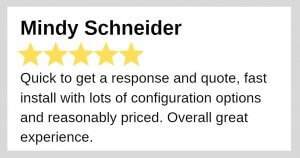Nearly every fire is small in its developing stage. They can be put out immediately if the proper firefighting tool is available, and the person who extinguished the fire has been appropriately trained. Most employers choose portable fire extinguishers for fighting early-stage fires.
To be useful, according to OSHA, portable fire extinguishers must be:
- Certified by a known examination laboratory — extinguishers made in the U.S. are commonly certified by FM Global and registered by Underwriters' Laboratories, Inc. (UL).
- The conventional type for the class of fire required.
- Placed where they are easily obtainable for instant use and enough number and capacity to deal with the anticipated class of fire.
- Maintained in good working condition and maintained and examined on a daily basis.
Application and Scope
This standard addresses the use, maintenance, placement, and testing of portable fire extinguishers fitted for employee use. Where extinguishers are presented but are not designed for employee use, and the company has an emergency action plan (29 CFR 1910.38), and a fire prevention plan (29 CFR 1910.39), then only the maintenance, inspection, and testing specifications are appropriate.
Companies having an emergency response plan which assigns specific employees to be the single employee entitled to use the accessible, and portable fire extinguishers, and which needs every other employee in the area to quickly evacuate the involved work area upon the sounding of the alarm, are excluded from the requirements of the standard. When extinguishers are not accessible, employers who have implemented and established a printed fire safety policy which needs the quick and total evacuation of workers from the area upon the sounding of a fire alarm signal are excluded from all elements.
Types of Portable Fire Extinguishers
Diverse types of fire extinguishers are intended to fight various kinds of fire. The three most popular types of fire extinguishers are carbon dioxide (CO2), dry chemical, and air-pressurized water.
Water is one of the most generally used extinguishing agents for ordinary combustibles.
Air-pressurized extinguishers are filled nearly two-thirds with water, then pressurized with air. Sometimes detergents are added to create foam. Air-pressurized water extinguishers smother the fire by cooling the surface of the fuel to separate the "heat" element of the fire triangle. Do not use water to suppress electrical fires or flammable liquid.
CO2 extinguishers are charged with CO2, a non-flammable gas under pressure. These extinguishers douse the fire by removing the oxygen, and, because of the high demand, they additionally have a cooling effect on lights. CO2 extinguishers are intended for electrical fires and flammable liquid only.
Dry chemical extinguishers douse the fire by covering the fuel with a layer of fire retardant powder, dividing the fuel from oxygen.
Classes of Fire Extinguishers
Class A fire extinguishers are applied for common combustibles such as textiles, wood, paper, and some plastics. This fire class needs the heat-absorbing results of water or the coating effects of some dry chemicals. According to NFPA, extinguishers fit for Class A fires should be distinguished by a green triangle bearing the letter "A."
Class B fire extinguishers are applied to gas fires and flammable liquid such as gasoline, oil, etc. These extinguishers seize the fire of oxygen and prevent the fire chain by restraining the discharge of flammable vapors. According to NFPA, extinguishers fit for Class B fires should be distinguished by a red square containing the letter "B."
Class C extinguishers are used on fires that include live electrical material that needs the use of electrically nonconductive agents. Once the electrical machine is de-energized, extinguishers for Class A or B can be applied. According to NFPA, extinguishers fit for Class C fires should be distinguished by a blue circle containing the letter "C."
Class D extinguishers are used on ignitable metals such as titanium, sodium, magnesium, etc., which need a medium that does not respond with the hot metal. According to NFPA, extinguishers fit for Class D fires should be distinguished by a five-point painted star containing the letter "D." and is normally yellow in color.
Class K extinguishers are utilized on fires concerning cooking media (grease, oils, and fats) in industrial kitchens. Because of higher heating rates of vegetable oils in industrial cooking tools, the NFPA Pattern for Portable Fire Extinguishers (NFPA 10) involves a Class K extinguisher. These fire extinguishers operate on the principle of saponification, which happens when alkaline mixtures like potassium carbonate, potassium acetate, or potassium citrate are added to burning cooking oil.
The chemicals mixed with the fatty acid produces a soapy foam on the top that holds in the steam and vapors that suffocates the fire. These extinguishers are distinguished by the letter "K."
Portable Fire Extinguisher Markings
NFPA 10 gives suggested markings for portable extinguishers so users can immediately recognize the classes of fire on which the extinguisher will be enough. The marking scheme combines pictographs of both unacceptable and recommended extinguisher types on a sole classification label.
Hydrostatic Extinguisher Testing
Hydrostatic testing of portable extinguishers is created to protect against sudden in-service mess. This can be generated by external corrosion, internal corrosion, and damage from mishandling, etc. Hydrostatic testing must be conducted by qualified personnel with correct facilities and test equipment.




